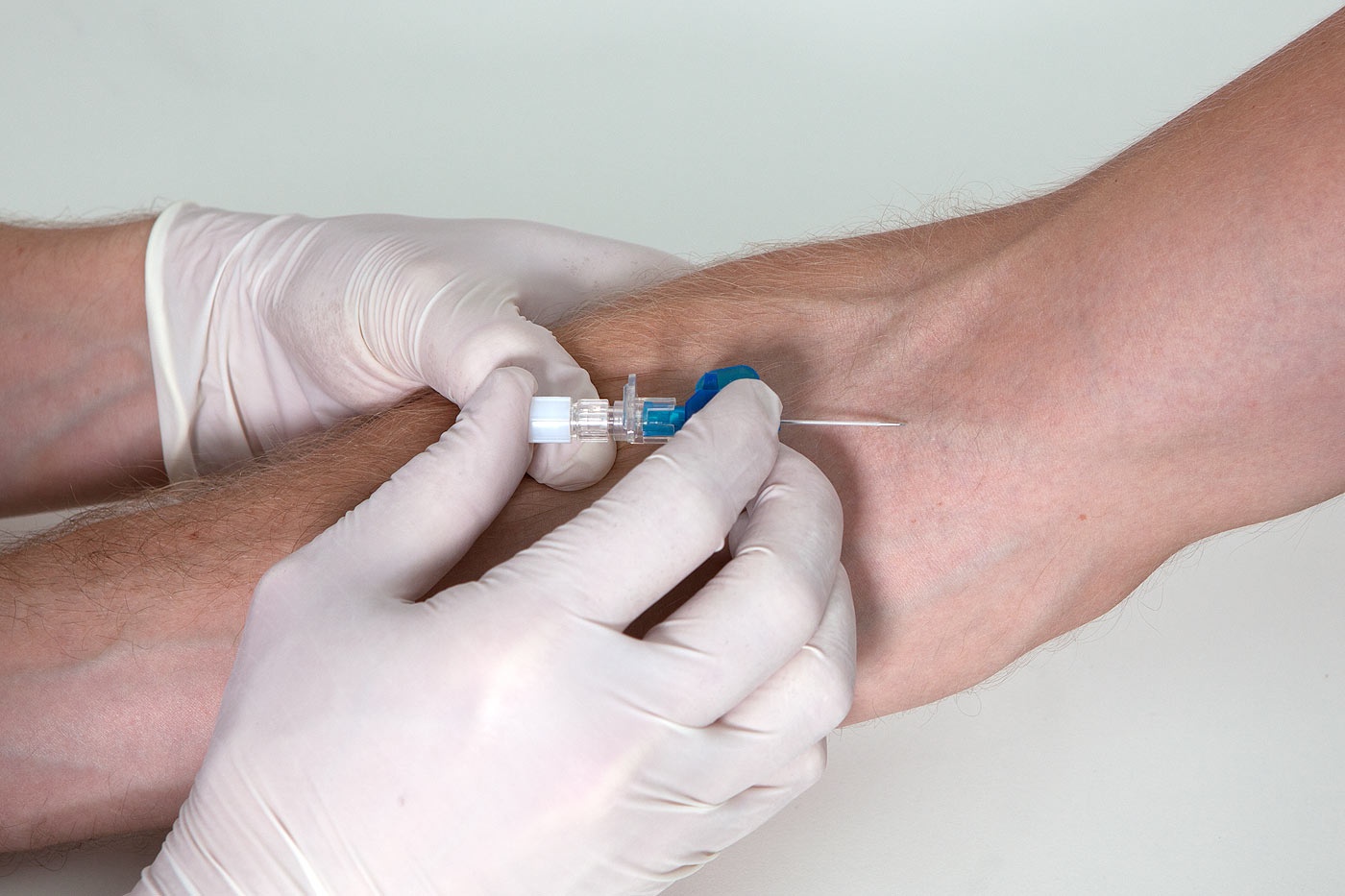Catheter-related blood stream infections: prevalence, risk factors and antimicrobial resistance pattern
https://doi.org/10.1016/j.mjafi.2019.07.002Get rights and content
Background
Intravascular devices have significant potential for producing iatrogenic diseasesresulting in catheter-related blood stream infections (CRBSIs). A study was undertaken to find the prevalence of CRBSI among patients in acute wards and to analyze the associated risk factors, causative pathogens with their antibiotic susceptibility (ABST) patterns.
Methods
Randomly ten days per month were chosen, for a period of two years. All the acute wards patients who were on indwelling blood catheters were identified. Those fulfilling the CRBSI criteria were further worked up for confirmation of diagnosis by differential time to positivity. The catheter tip was cultured by Maki's semiquantitative method. ABST of the isolates obtained was performed by Kirby–Bauer disk diffusion method.
Results
The prevalence of CRBSI was found to be 39.25% with the most common organism isolate being Serratia marcescens (23.81%). The immunocompromised status of the patients and catheterisation time were significant risk factors. Methicillin resistance was found to be 33.33% in coagulase-negative staphylococci. The resistance to vancomycin among the Entercoccus faecium isolates was found to be 33.33%. Among the gram negatives, resistance to aminoglycosides, fluoroquinolones and third-generation cephalosporinswas high.
Conclusion
The study highlights the importance of regular surveillance programs, an efficient infection control program, strict adherence to antiseptic measures and use of a rational antibiotic policy for the early diagnosis and better management of CRBSI.
Introduction
Modern medical care is heavily dependent on a reliable and safe vascular access. Intravascular devices by providing a stable access have revolutionised the critical care. These devices, however, are also associated with a significant potential for producing iatrogenic diseases resulting in catheter-related bacteraemia or candidemia.1
Catheter-related blood stream infection (CRBSI), a nosocomial infection, is a significant clinical problem which is continuously evolving because of changes in the population at risk, changes in spectrum of available pathogens, and an increased use of broad-spectrum antibiotics.2, 3 According to the National Nosocomial Infections Surveillance (NNIS) system of the Centres for Disease Control and Prevention (CDC), the median rate of CRBSI in intensive care units (ICUs) of all types ranges from 1.8 to 5.2 per 1000 catheter-days with the rate of about 25.6%.4 However, these rates are highly variable, and can be expected to be much higher for the developing countries.
There are limited Indian studies on CRBSI which have found the incidence of these infections to be around 27%.3Each new episode of CRBSI increases the risk of septicaemia by 4–14% that of death by 12–25%, in addition to prolonging hospitalization and increasing healthcare costs by manifold.3, 5 Besides CRBSI, central venous catheters (CVCs) put a patient at risk of developing various local as well as systemic complications such as infection at the site of insertion, septic thrombophlebitis, endocarditis, metastatic infections and other serious complications such as bacteraemia, sepsis and death. It is, therefore, very important that such infections be recognized at the earliest and timely diagnosis be made by using a combination of clinical signs and quantitative culture techniques3 along with their antibiotic susceptibility (ABST) pattern which forms a very important tool in guiding the physician for starting the appropriate therapy.
With this backdrop, this study was undertaken with the objectives of studying the prevalence of CRBSI among the hospitalized patients admitted in the acute wards, the associated risk factors, causative pathogens and their respective ABST patterns.
Materials and methods
The present study was conducted in an urban tertiary care teaching hospital. Ten days were chosen at random, every month for a period of two years. During these ten days, all the patients admitted to the acute wards (surgical ICU, medical ICU, acute medical and acute surgical) of the hospital and who were put on indwelling blood catheters were identified. Patient inclusion criteria necessitated a hospital admission of equal to more than 48 h.
Exclusion criteria included neonatal and paediatric
Results
A total of 2800 patients were hospitalised during the study period; of which, 1898 were on central or peripheral catheter (Fig. 3). Among the 1898 on catheters, there were total 212 suspected cases of CRBSI. Of the 212 suspected cases, 107 were on CVC and 07 were on PICC. The remaining 98 cases were on peripheral venous catheters, and these were excluded from the study. Among the 107 suspected cases on CVC, 42 were positive by differential time to positivity (i.e. 39.25%), and from the 07
Discussion
Venous catheters are increasingly being used for administration of chemotherapeutic agents, blood products, parenteral nutrition and antibiotics, but they could prove to be “double-edged swords” and result in serious infections.12 According to studies, about 4–8% of all CVC eventually result in CRBSI.13, 14, 15 In a study carried out in England between 1997 and 2001, intravascular devices accounted for 43.3%–52.4% of nosocomial blood stream infections; of which, central lines were the most.

